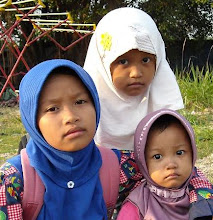Abstract
The urban sprawl has been need new consequence facilities and new land in the outside of the city. The negative impact of urban sprawl was uncontrolled urban growth such slum, squatter, uncontrolled spatial planning, more high gap of differentiation developed between urban and rural. Klang-Langat valley metropolitan were two urban areas with more rapid growth in west of Malaysia Peninsula. This research identified the process of spatial transformation of urban sprawl. To find it, this research was used secondary data such journal, textbook, project report and other relevant literature. To describe area was using three hierarchies of spatial analysis. For described of country, this research used macro policy analysis, for described state used middle or land use city analysis and for described region used detail or case analysis.
Our finding suggest that the spatial process transformations of the city were depended on the history of the Tin mine in Ampang. To develop city was using Klang River as base transportation until to Port Klang in the earlier. Then, urban growth has developed by trading activity in Kuala Lumpur and recently, urban growth has been dominantly in services sector. The process of urban sprawl move from Petaling to Kuala Langat, Sepang, and Hulu Langat district. There was differentiation of spatial pattern between in the centre of the Kuala Lumpur city with compact of land use pattern and at the beyond such Kuala Langat, Sepang, and Hulu Langat with leap frog of land use pattern. Spatial form of gap differentiation could find in Klang valley with more growth developed than Langat valley where dominantly palm agriculture. Urban Sprawl caused two regions at Klang-Langat upstream valley used to build area such housing, industrial and service whereas this region must for recharge area.
The urban sprawl has been need new consequence facilities and new land in the outside of the city. The negative impact of urban sprawl was uncontrolled urban growth such slum, squatter, uncontrolled spatial planning, more high gap of differentiation developed between urban and rural. Klang-Langat valley metropolitan were two urban areas with more rapid growth in west of Malaysia Peninsula. This research identified the process of spatial transformation of urban sprawl. To find it, this research was used secondary data such journal, textbook, project report and other relevant literature. To describe area was using three hierarchies of spatial analysis. For described of country, this research used macro policy analysis, for described state used middle or land use city analysis and for described region used detail or case analysis.
Our finding suggest that the spatial process transformations of the city were depended on the history of the Tin mine in Ampang. To develop city was using Klang River as base transportation until to Port Klang in the earlier. Then, urban growth has developed by trading activity in Kuala Lumpur and recently, urban growth has been dominantly in services sector. The process of urban sprawl move from Petaling to Kuala Langat, Sepang, and Hulu Langat district. There was differentiation of spatial pattern between in the centre of the Kuala Lumpur city with compact of land use pattern and at the beyond such Kuala Langat, Sepang, and Hulu Langat with leap frog of land use pattern. Spatial form of gap differentiation could find in Klang valley with more growth developed than Langat valley where dominantly palm agriculture. Urban Sprawl caused two regions at Klang-Langat upstream valley used to build area such housing, industrial and service whereas this region must for recharge area.
Key words: urban sprawl, spatial analysis, river basin





No comments:
Post a Comment